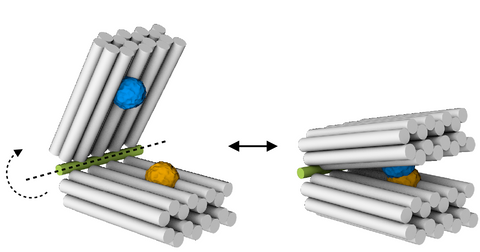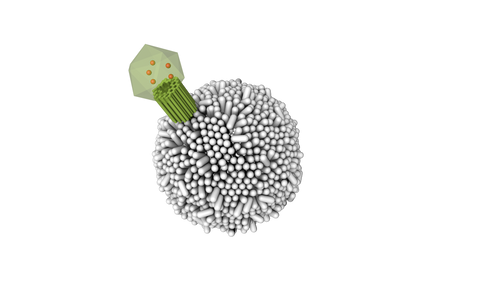Our technology
Our technology
Structures of arbitrary shape can be designed
Whether 2 or 3-dimensional, rigid or flexible, solid or hollow, our nanostructures can adopt any shape with nanometer precision. These objects can be stored for months in solution, frozen, or dried, and will retain their shape. The following shapes are examples of figures that already have been engineered:

A wide range of chemical modifications can be attached to the nanostructures
Fluorescent dyes, amines, thiols, maleimides, azides, quantum dots, and many other modifications can be easily introduced at any position on the nanostructure. Modifications are covalently bound to the structure, ensuring their accurate placement.

Dynamic nanostructures with tuneable conformations can be engineered
Structures can include flexible joints and switchable locks. This allows the design of structures with complex functionalities that can be triggered by external signals.

Application examples

Lithography
The nanometer-scale features of our nanostructures can be transferred onto semiconductor materials through lithographic processes. This may open a route towards next generation semiconductor device production.

Fluorescent markers/standards
Nanostructures with tunable optical properties can be constructed, utilizing the chemical addressability of our DNA sequences. Many fluorescent modifications can be easily arranged on a single structure, leading to extremely bright and homogenous signal sources. Furthermore, structures can be designed to specifically bind to targets, allowing the controlled tagging of samples.

Targeted drug delivery
Cargo molecules can be encapsulated within a nanostructure and released in a target environment or upon receiving an external signal. Due to the molecular programmability of the structures we can design shape-recognition or allosteric mechanisms and release the cargo upon binding to the target.

Liquid crystals for NMR
Nanostructures can be designed to form detergent-resistant, thermally stable, and structurally programmable liquid crystals. These liquid crystals can be used to induce alignment of membrane proteins for NMR structure determination. Through the introduction of chemical modifications, the specific interactions can be further tuned.

Nanoelectronics
Novel nano-electronic devices can be templated on our nano-engineered structures organizing individual building blocks such as carbon nanotubes, gold nanoparticles, or synthetic polymers into functional assemblies.

Lipid membrane channels
Custom nanopores and channels with user-defined dimensions and chemical features can be created. In combination with solid-state nanopores or biological membranes, such structures can already be used to discriminate between individual molecules.
